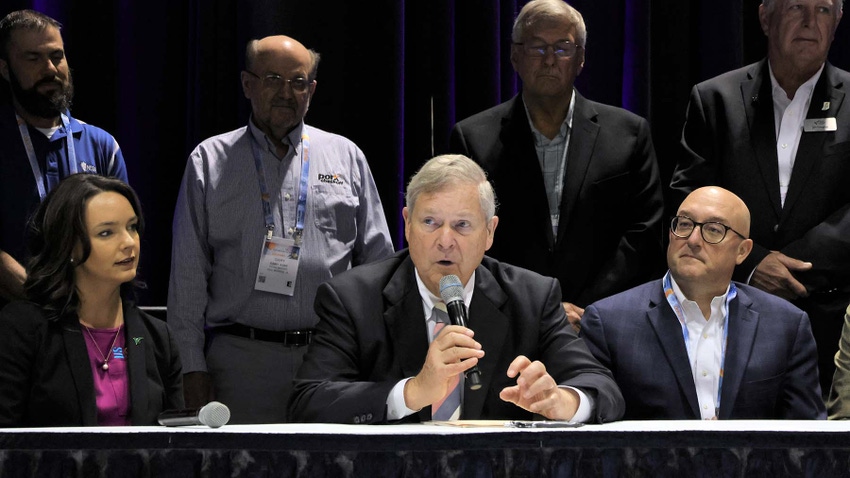
USDA awarded $95 million in climate-smart commodity grants to farmers in 20 states transitioning to cover crops. The grants will help with financial and technical assistance. They are the first funds allocated through the Farmers for Soil Health program.
Agriculture Secretary Tom Vilsack made the announcement during the Commodity Classic event in Orlando. According to him, agriculture is on the cusp of being the first major industry to move aggressively toward a net zero carbon future.
“This is a really important day for American agriculture,” Vilsack says. “It is the beginning of a process of a number of projects that are going to transform how we farm, where we farm, and what we do to produce sustainably produced crops and livestock products.”
Farmers for Soil Health is a USDA collaborative partnership with the Soy Checkoff, Pork Checkoff and the National Corn Growers Association. It creates a farmer-led cover crop program intended to advance sustainable soil health practices that improve farmer profitability.
Secretary Vilsack praised the National Fish and Wildlife Foundation and its partners for their commitment to soil health. He also recognized the American Soybean Association for its work with other commodity groups to find ways for producers to utilize new technologies.
New grants for fertilizer production
Earlier in the day during his keynote address at Commodity Classic, Vilsack announced the first round of grants in a program to increase domestic fertilizer production. Those grants will go to eight independent producers in Alabama, Colorado, Massachusetts, Ohio and Washington.
The funds will be used to modernize equipment, advance climate-smart practices, increase fertilizer production and expand capacity. It will also help those producers reduce input costs.
Vilsack unveiled the Fertilizer Production Expansion Program during last year’s Commodity Classic. The program is intended to spur competition and lead to fairer prices. USDA hopes it will also reduce dependence on foreign fertilizers.
The agency received $3 billion in applications from more than 350 independent businesses across the country since the program began.
“There’s genuine interest in this so we are going to continue to try to figure out ways in which we can provide support and help reduce inputs,” Vilsack said.
About the Author(s)
You May Also Like






